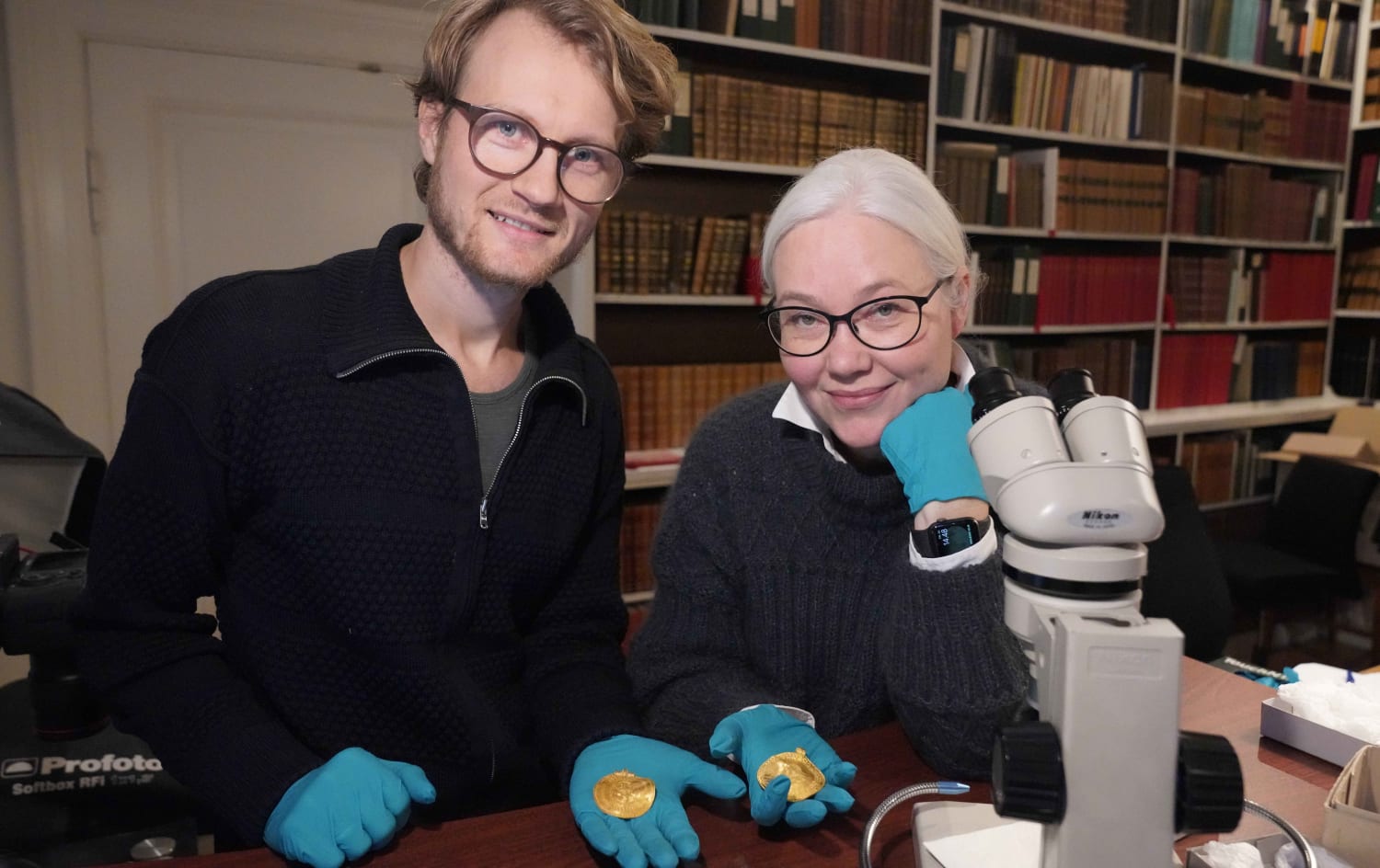[ad_1]

The disc features an inscription: “He is Odin’s man,” said Krister Vasshus, a linguist who helped to decipher the runic inscription. He added that it also features a name or nickname “Jaga” or “JagaR,” who was likely the king or ruler of the place where the bracteate was made.
This “can tell us something about the relationship people had with their gods and possibly even how divine rulership was organized in Scandinavia at this time,” he said.
Although it was known that Odin had existed as a concept or deity for centuries before the bracteate was created, Vasshus said it was “very exciting indeed.”
“The carver knew exactly how to shape the runes to make them perfect, simply perfect,” he added. “They are exquisite.”
The bracteate also displays a swastika, an ancient symbol used throughout the Iron Age and later co-opted by German nationalists and Adolf Hitler’s Nazi Party.
Odin appears in multiple pre-Christian barbarian belief systems across northern Europe in the centuries following the collapse of the Roman Empire in the west. He was known as Wōden to the Saxons who colonized England in the 5th and 6th centuries, and as Uuôden in Old Dutch.
Some traditions place him as the father or ruler of the gods. The Prose Edda, one of the main sources of Norse mythology, refers to Odin as the “Allfather.”
“Odin is highest and eldest of the Æsir [the primary group of Norse gods]: he rules all things, and mighty as are the other gods, they all serve him as children obey a father,” it says.
The Edda was based on Old Norse tradition but was written in 13th century Iceland long after Vikings had converted to Christianity.
Odin’s sons included Thor, the god of thunder, the inspiration for Marvel’s comic book series and movie series of the same name.
Some modern Icelanders still follow the Old Norse pagan religion: work began on a temple honoring the gods in 2016.
Vasshus said the bracteate may have been buried to hide it from enemies or as a tribute to appease the gods.
“It’s a very large amount of gold, so it must have been a very serious situation that they wanted improve,” he said.
“We know that in 536 A.D. there was an enormous volcanic eruption and there were at least two more that blocked the light of the sun. There must have been famine in the areas that relied on grains and cereals,” he said. “We also know that in 541 A.D. there was a plague similar to the Black Death.”
He added that at that time “Scandinavia was predominantly an area where they relied on oral tradition, so it was not a very literate society and we have very few written sources from this part of the world at this period of time.”
As a result, he said, the disc, “pushes our knowledge a bit further which is very exciting.”
 Latest Breaking News Online News Portal
Latest Breaking News Online News Portal




